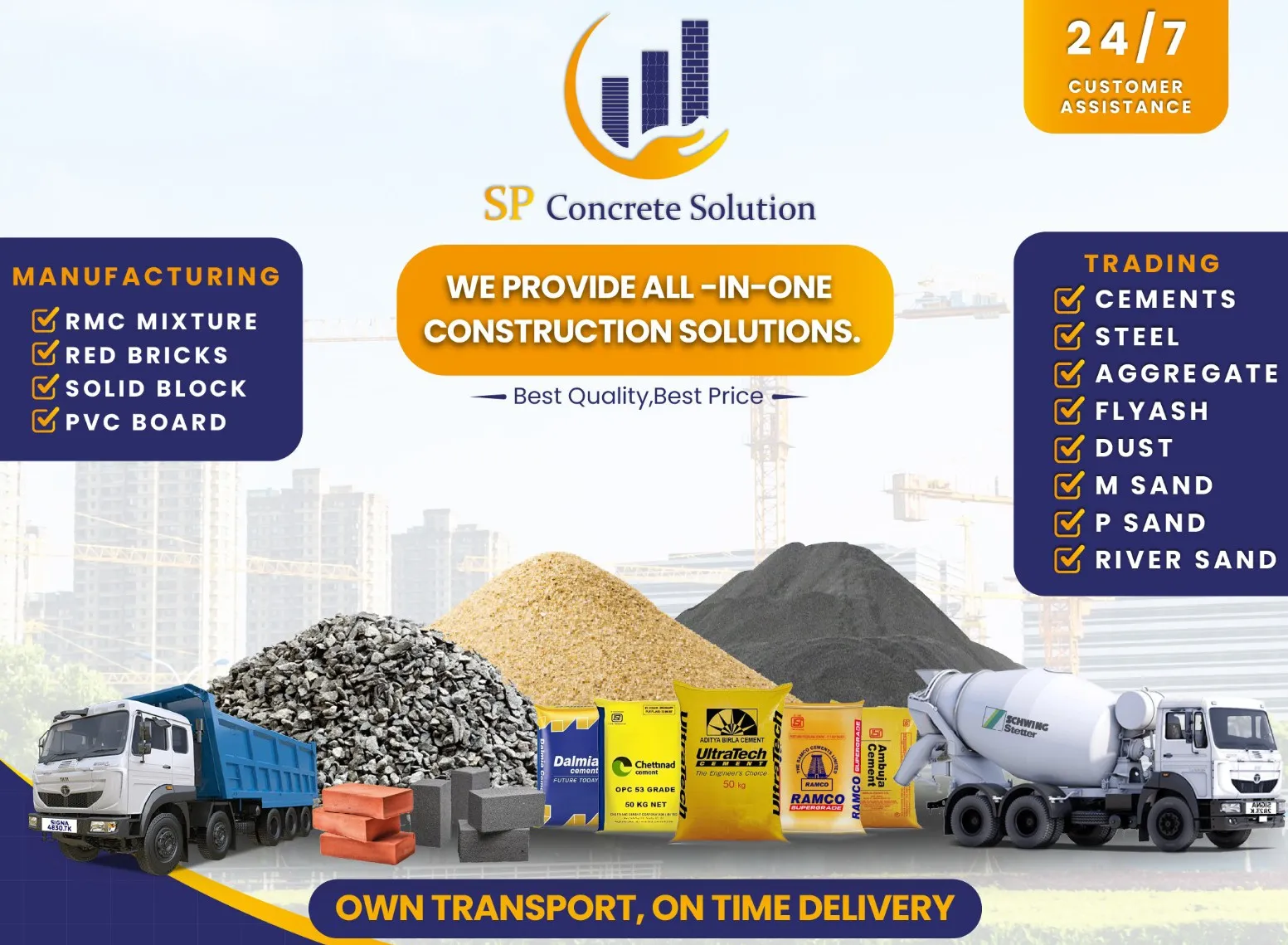Get ready to tackle your construction project like a pro! With our construction material guide, you’ll have everything you need to plan and complete your project with ease. We’ve got you covered with a complete list of materials, insights into their uses, and even printable templates to streamline your planning. No more guesswork or wasted time – just smooth sailing all the way through. Trust us, this guide is the secret weapon you need for a stress-free construction adventure.
Material List for Construction Projects
Building something amazing? Whether it’s a house, a bridge, or even a skyscraper, getting the right materials is the first step! That’s where a material list comes in – think of it as your shopping list for construction success.
Your Construction Toolkit: More Than Just a List
We’re not talking about a scribbled note on a napkin here. Picture a detailed guide with everything you need to know:
- 61 Essential Materials: From the basics like concrete and steel to innovative solutions like self-healing concrete, we’ve got you covered. We’ll even show you what each material looks like and how it’s used!
- Templates That Work: Forget messy spreadsheets! Use our ready-made templates in Excel, PDF, or Google Docs to create your own organized material lists in a snap.
- Material Deep Dive: We don’t just tell you what to get – we tell you why. Discover the unique properties of each material, how to use it effectively, and what to consider when choosing the best option. Think of it as getting a crash course in construction materials!
- Stay Ahead of the Game: The construction world is always evolving, and we’ll keep you in the loop! Learn about the latest innovations, like eco-friendly materials and smart surfaces that practically clean themselves. We’ll also give you a glimpse into the future of the industry, so you can be prepared for what’s next.
Building Blocks of Success: Why This Matters
A well-crafted material list isn’t just about organization – it’s about setting yourself up for a smooth and successful project:
- Seamless Shopping: Imagine walking into a store with a detailed list – no more forgetting crucial items or buying too much! That’s the power of a good material list. It makes ordering materials a breeze and ensures you get exactly what you need, when you need it.
- Waste Not, Want Not: Construction projects can generate a lot of waste. A precise material list helps minimize that by ensuring you’re not over-ordering or ending up with a mountain of unused supplies.
- Budgeting Like a Pro: Knowing exactly what materials you need means you can get accurate quotes from vendors and negotiate better prices. This helps you stay within budget and avoid costly surprises down the line.
- On Time, Every Time: Delays are a nightmare in construction. A well-organized material list helps keep things moving smoothly by ensuring you have everything you need on hand. This keeps your project on schedule and prevents costly downtime.
- Quality You Can Trust: Using the right materials is essential for building strong, durable structures. Our detailed information helps you choose materials that meet industry standards and stand the test of time.
Mastering the Material List: Your Key to Construction Confidence
Think of your material list as the backbone of your construction project. It’s the foundation upon which you’ll build your success. By taking the time to create a comprehensive and well-organized list, you’re setting yourself up for a smoother, more efficient, and ultimately, more rewarding construction experience.
What are the essential construction materials for house building?
Alright, so we’ve covered the basics of planning your dream home, but now let’s talk about what it actually takes to build it! Choosing the right materials is like picking the right ingredients for a delicious cake – it can make or break the final product. You want a house that’s strong, stands the test of time, and keeps you cozy inside. So, let’s dive into the essential construction materials that make a house a home:
1. Concrete: The Rock-Solid Foundation
Think of concrete as the bedrock of your house – literally! It’s that super strong mix of cement, water, and aggregates (like gravel or sand) that hardens into a rock-solid base. You’ll find concrete in your foundation, slabs, walls, and more. It’s the backbone that keeps everything upright and stable.
2. Steel: The Backbone of Strength
Steel is the superhero of building materials – strong, versatile, and ready to take on any challenge. We’re talking beams, columns, reinforcements – anything that needs to resist bending, warping, or the weight of the world (or at least your house). Steel gives your structure that extra muscle to stand tall and proud.
3. Brick: The Classic Charmer
Ah, brick. It’s been a building staple for centuries, and for good reason. Bricks bring that classic charm and timeless appeal to your home’s exterior. But don’t let their good looks fool you – these bad boys are tough! They offer excellent thermal insulation (keeping your home cozy in winter and cool in summer) and are naturally fire-resistant.
4. Wood: The Versatile All-Rounder
Wood is like that trusty friend who can always be counted on. It’s lightweight yet surprisingly strong, making it perfect for framing, roofing, and even siding. From traditional timber frames to sleek modern designs, wood’s versatility shines through. Plus, it adds a warmth and natural beauty that’s hard to beat. Looking for a durable and aesthetically pleasing option for your next project? Discover the benefits of Post Beamwood Beam and see why it’s a popular choice for various construction needs.
5. Insulation: Your Cozy Best Friend
Don’t underestimate the power of insulation! Think of it as a warm hug for your house, keeping those chilly drafts out in the winter and the scorching heat at bay in the summer. Insulation goes in your walls, ceilings, and floors, and comes in various forms like fiberglass, cellulose, and spray foam. It’s a must-have for energy efficiency and year-round comfort.
6. Roofing Materials: Shielding You from the Elements
Your roof is your home’s first line of defense against rain, snow, wind, and all that Mother Nature can throw at it. You’ve got options here – asphalt shingles are the most common, while metal roofing offers durability and longevity. Tile roofing, on the other hand, brings a touch of elegance and is super durable in warmer climates.
7. Windows and Doors: Letting the Light In
Windows and doors do more than just provide access and views; they’re crucial for natural light, ventilation, and overall energy efficiency. When choosing windows and doors, look for energy-efficient models that prevent heat loss in the winter and minimize heat gain in the summer.
8. Hardware: The Unsung Heroes
Last but not least, let’s give a shout-out to the unsung heroes of construction – the hardware. We’re talking nails, screws, bolts, hinges, and all those little bits and pieces that hold everything together. Don’t underestimate their importance – they’re the tiny but mighty forces that ensure your house is built to last.
Key Takeaways:
- Concrete: Your foundation’s best friend, offering unmatched durability.
- Steel: The powerhouse that provides strength and reinforcement.
- Brick: Classic charm meets modern-day durability and thermal efficiency.
- Wood: The versatile all-rounder, perfect for framing, roofing, and more.
- Insulation: Your secret weapon for energy efficiency and year-round comfort.
- Roofing: Protecting your home from the elements, come rain or shine.
- Windows/doors: Natural light, ventilation, and stylish gateways to your world.
- Hardware: The small but mighty components that hold everything together.
How do I create a material list for a construction project? – Template & Examples
You’ve got the blueprints, the crew is ready, but hold on – what about the materials you’ll actually use to build this thing? Creating a material list might seem tedious, but it’s the backbone of any successful construction project. It’s like making a grocery list before you hit the store, except instead of ending up with an empty fridge, you risk delays, budget blowouts, and a whole lot of frustration if you don’t get it right.
Think of it this way: your material list is your project’s shopping list, recipe, and inventory tracker all rolled into one. It tells you what you need, how much of it you need, and when you need it.
Breaking it Down: Your Material List Action Plan
- Project Deep Dive: Before you even think about lumber or nails, dive headfirst into your project specifications and plans. These documents are your treasure map, revealing the project’s scope, the materials you’ll need, and the estimated timeline.
- Get Organized: Imagine a giant, messy toolbox where you can never find what you need. Now imagine a neatly organized one where everything has its place. That’s what categorizing your materials does for your project. Divide them into groups like “Foundation,” “Framing,” “Electrical,” “Plumbing,” and so on. This keeps things tidy and ensures you don’t overlook anything crucial.
- Picking the Right Stuff: Now for the fun part – choosing the materials! This is where your inner researcher comes in. You need materials that meet your project’s specific needs, fit within your budget, and won’t fall apart after a year. Think about durability, how eco-friendly they are, and whether they’re readily available in your area.
- Shop Around for the Best Deals: Just like you wouldn’t buy the first thing you see at the store, don’t settle for the first quote you get. Contact several vendors, compare their prices, delivery times, and any discounts they offer. Remember, a little negotiation can go a long way!
- Building Your Material Masterpiece: Time to put it all together! Use a spreadsheet or construction project management software (there are some great ones out there!) to create your official material list. Don’t skimp on the details! Include quantities, sizes, specifications, and contact info for each vendor.
- Stay on Top of Your Game: Think of yourself as the inventory manager. You need to keep tabs on what materials arrive, how much is being used, and what’s left. This prevents shortages, avoids over-ordering, and keeps your project moving smoothly.
- Roll with the Punches: Construction projects are rarely predictable. As your project evolves, so will your material list. Review it regularly and make adjustments as needed. New information pops up, designs change, and unforeseen issues arise – it’s all part of the process.
Example Material List Template:
| Item | Description | Quantity | Unit | Unit Price | Total Price | Vendor | Lead Time | Notes |
|---|---|---|---|---|---|---|---|---|
| Lumber | 2x4x8 | 150 | pcs | $5.00 | $750.00 | ABC Lumber | 2 days | |
| Concrete | 3000 PSI | 10 | cubic yards | $120.00 | $1,200.00 | XYZ Concrete | 3 days | |
| Nails | 3-inch | 10 | lbs | $8.00 | $80.00 | 1 day |
By following these steps and using a detailed material list, you’ll transform what might seem like a daunting task into a manageable and essential part of your construction process. Remember, a well-planned project is a successful project. Looking for reliable construction companies in Nigeria to help you with your project? We have compiled a list of the top players in the industry. Click construction companies in Nigeria to learn more.
What are the different types of construction material lists?
Okay, so we’ve talked about how important it is to keep track of all the stuff you need to build something, right? But it’s not just about making one giant list; it’s about organizing those lists in a way that makes sense for each part of the project. Let’s break down the most common types of material lists you’ll come across:
1. The “This is What We Agreed On” List (Bill of Quantities or BOQ): Think of this like the official shopping list that both the builder and the client agree on. It’s super detailed, listing out every single material needed, how much of each, the specific type (no skimping on quality!), and the total cost. This acts as a contract, making sure everyone’s on the same page about what’s being bought and how much it’ll cost.
2. The “Blueprint Breakdown” List (Material Takeoff List): Imagine you’re piecing together a giant puzzle, but instead of a picture, you’re building a house. This list is like separating all the puzzle pieces (materials) you’ll need based on the blueprint (project drawings and specs). It tells you precisely how much of each material you need, making ordering and keeping track of everything much easier.
3. The “Dear Supplier” List (Purchase Order List): This is where you take all that carefully calculated info from your Material Takeoff List and turn it into an actual shopping list for each supplier. It’s not just about what you need; it’s about how much you’re buying from whom, how much it costs per item, and when you need it all delivered. This keeps things organized and makes sure everyone’s on schedule.
4. The “What’s in Stock?” List (Inventory List): Picture this as the constantly evolving list you keep stuck to your construction site fridge. It tells you what materials you have on hand at any given moment, how much of each, where it’s stashed, and if it’s ready to use or needs a little fixing up. Keeping this list updated is key to avoiding any “Oh no, we’re out of nails!” moments and keeps the project moving smoothly.
5. The “Is This Okay to Use?” List (Material Submittal List): Sometimes you need to get the thumbs-up from the big boss (architect or engineer) before using certain materials. This list is like presenting your case, complete with details about the material, what it’s made of, how it performs, and even a sample or two. It’s about ensuring everything meets the required standards and getting the official “Yep, this is good to go” before it ends up in the building.
So there you have it! Understanding the different construction material list “species” is like having a secret weapon against chaos. It makes managing materials way less intimidating, keeps costs in check, and helps ensure your project finishes on time and looking sharp!
- White Kitchen With Butcher Block Countertops: A Warm, Inviting Design - January 4, 2026
- Marble Countertops Prices: What Impacts the Overall Cost to Install? - January 3, 2026
- Marble Countertops Cost: What Factors Impact the Total Price? - January 2, 2026










